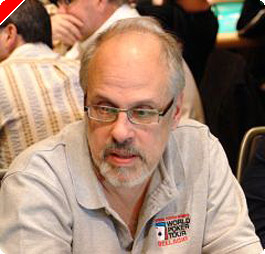
This article is a PokerCollectif exclusive. Thanks to Jared Tendler for text!
Author: Jared Tendler
Translation: Kidam for PokerColletif
The tilt is one of the most confusing concepts for the majority of poker players and the reason is very simple: it is described and defined much too broadly. When a player plays badly, it is often said that it tilt without even asking why it tilt.
When speaking of tilt, each player is different. Some players will be tiltes after a badbeat. Others will be tuned after a bad game. Others will still be tuned due to boredom. The tilt may have several effects on the game of a player. Some will play too aggressively and want gambler and others will be too passive.
Each form of tilt requires a different approach to correct. Say: "I'm tuned" will not correct the problem. It's like go see the doctor and tell him: "heal me, I'm not fine", without even specifying why you are not well.
To cure the tilt, you must understand it and to do this, you will need to analyze all the little details. After working thousands of hours with poker players, I reduced the tilt to this:
Tilt = Rage + bad game
When your emotions are too strong, the brain will reduce your ability to think. You can not think since the brain reduces your ability to think. We call this mechanism "fight or flight". If this mechanism does not exist, you would continue to play well. The tilt would not exist.
You can not control your brain. So the only thing you can do is to get to the point where your brain is completely confused.
You better understand your tilt. The fact to analyze your tilt will not only help you detect it at the first signs, but will also help you to combat it. When I work with a poker player, I always asked her to complete a form called: "The tilt profile" to help him.
Profile of the tilt
Answer on paper to these questions. If other ideas come you to mind about your tilt, note them. These questions are here to help you to identify your tilt.
I suggest you do these exercises several times over the next 2 weeks, especially after a session or tournament. When you are tiltes:
1 - What causes your tilt?
2 - Describe how you perceive. What are the physical signs that you are tuned (heat, feel like hitting, etc?). What are the sentences that you say in your head? What are the mistakes that you make on a poker table when you are tuned?
3 - What are the signs that you are tuned when your tilt is small or when you first start just to be tuned?
4 - How do you feel that you are losing control of your tilt?
Once you have completed your "profile of the tilt", there are 2 ways for you to use it. Most important in this exercise is to understand yourself the reasons for your tilt and effects. Your long-term goal will obviously be to cure your tilt. You will need to work very hard, but it will be no more complicated to work on the technical part of your game. In The Mental Game of Poker, there are at least 100 pages dedicated to understanding your tilt. You can also better understand the causes.
Another way to use your "profile of the tilt" is when you play. If you study it before playing, you will have better chance to tilt less. One of the best ways to control its tilt is to identify per second where it manifests itself. It is essential for you to identify your tilt as soon as possible.
Imagine that you identify your tilt to the second where it manifests itself. You can save a lot of money. For example, if the first signs of tilt are that you play more loose of the blinds, the next time you'll be in the blinds, you try to concentrate more. In addition, if it is for you the first step in tilt, if you go that you play too many blinds, you probably want to take a break before moving on to a higher degree of tilt.
You can thus take a break and take some deep breaths. It is a simple method to realize its tilt.
Of course, even if you better master your tilt, that doesn't mean you do tilterez never. There will be days where you will be tuned to a level very high. The goal is not to completely eliminate the tilt, but to control. Control its tilt is a long-term task.
Keep your sheets of tilt to mark the evolution of your progress. After several months of work, maybe will you continue to play too loose of the blinds when you're tuned, but perhaps too light because of 3better you have set when you are tuned. It would be a good result. You would still make errors, but at least you'd not play too badly.
The fact of having made progress will make you feel better.
This sheet is not a panacea, but it's the first step in the resolution of your tilt.
Note that the classic The Mental Game of Poker is currently available in french. On this subject, see article PokerCollectif.
To purchase the book in print, you can buy it directly from Jared.
If the electronic version suits you better, you can buy it on Amazon site.
In addition, for a limited time, PokerCollectif members will have a discount of 20% on the paper. It will be to enter the code ZE9Z44FX when you make your purchase.
You can discuss this article on our forums: profiling the tilt by Jared Tendler
-
Psychology... or mathematics?Next >




